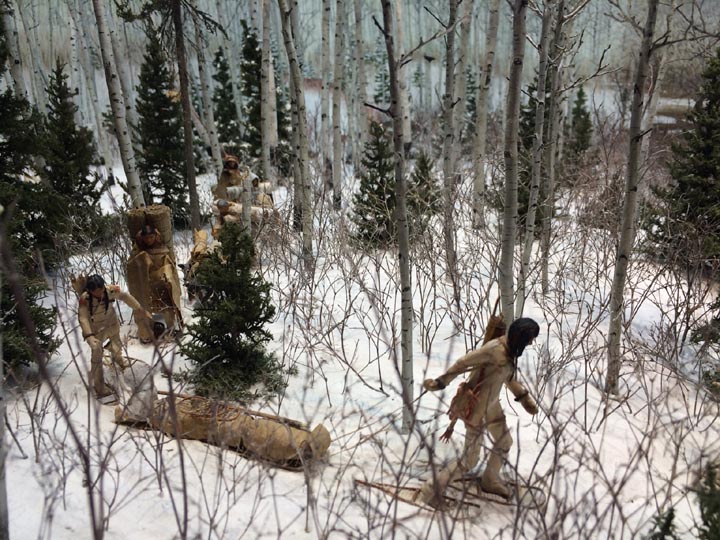By Kevin Brownlee
Past Curator of Archaeology
Yesterday the Museum launched a spectacular new mini-diorama in the Grasslands/Mixed Woods Gallery. The exhibit highlights the incredible talent of diorama artist Betsy Thorsteinson. Betsy along with Debbie Thompson, Ruth Dowse and countless volunteers worked on the project. The diorama highlights four separate scenes: a mid winter camp in Duck Mountain, moving camp in late winter, early spring maple sugar camp and fishing camp in late spring. These scenes represent an Anishnaabe family as they move across the landscape about 800 years ago.

Two of the scenes are based on archaeological excavations. The mid winter camp is representing a site on Child’s Lake in Duck Mountain. The spring fish weir is representing the Aschkibokahn Site at the mouth of the Duck and Drake Rivers on Lake Winnipegosis. The use of a mini-dioramas to depict the past is an exceptional way of communicating the results of archaeological research. There is no better way of bringing the past alive.
I have had the pleasure of assisting Betsy on this exhibit. I provided the colour of fish both before and after it was smoked, how bear paw snowshoes are worn and how the internal organs of fish were prepared. In other circumstances I related stories and experiences to Betsy and these would appear in the diorama. Grey Jays or Whiskey Jacks are called Grandmother by many First Nation people, who will feed these birds when they visit camps. Feeding these birds shows respect to the visiting grandmothers. When you visit the diorama find the Grandmother.


